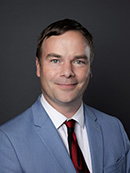Over the past year, more than 400 people came together in communities throughout B.C. to listen and talk about how reconciliation with Indigenous people can shape a better future through workshops held by Reconciliation Canada.
“Dialogue is one of the foundations of this journey we are all on,” said Chief Robert Joseph. “Dialogue means we all speak and listen, and by creating that two-way process, we begin to understand each other and find the common ground that allows us to move forward into a more positive future.” Joseph is a Hereditary Chief of the Gwawaenuk First Nation, member of the Order of British Columbia, a residential school survivor and co-founder of Reconciliation Canada.
Reconciliation Canada’s approach is to shine a light on the history and multi-generational impacts of the residential school system and to learn from each affected community about their individual paths towards reconciliation. With this goal, between July 2016 and April 2017, Reconciliation Canada held a series of reconciliation dialogue workshops to give people an opportunity to explore the meaning of reconciliation and how they can contribute to the process.
One of the key elements was to provide a safe environment where people felt free to participate in meaningful discussion and explore different ways community-based reconciliation activities can be achieved.
Released in 2015, the Truth and Reconciliation Commission's Calls to Action have focused attention on the ways government and individuals can contribute to reconciliation with Indigenous people in British Columbia.
The workshops took place in Williams Lake, Prince George, Victoria, Port Hardy, Prince Rupert, Terrace and Smithers, and included representatives from local First Nations communities, municipal and provincial government staff, business leaders, educational institutions, health organizations and non-profit organizations.
Charlene Seward, who planned and ran the workshops, was inspired by the level of community engagement. “We had a much larger turnout than we were expecting,” she said. “It really demonstrated that individuals and communities wanted to be part of the conversation. Seeing how each community developed their action plan to make change happen was really exciting.”
Examples of possible community actions discussed at the workshops included weaving Indigenous history into the regional tourism planning, ensuring municipal websites reflect the contributions of local Indigenous communities, and updating employee orientation materials and processes to take account of Indigenous history and the impacts of colonization.
Seward also felt it was important to get a cross-section of participants. “Reconciliation has to happen in all sectors,” she said. “Everyone has a different understanding of reconciliation and what it means to them. It was important to give participants that safe space where they could offer their different perspectives based on where they were on their own personal journey.”
“I’m from the Squamish Nation,” Seward said. “I’m an inter-generational survivor ― my parents went to day school and their parents went to residential school. By doing this work, I feel that I am honouring my family and the past. The work the communities did in these dialogue workshops and the work of Reconciliation Canada is important and I’m honoured to be a part of it.”
Learn More:
To hear Chief Joseph in this own words: ow.ly/sati30cqUSl
Reconciliation Canada’s reconciliation toolkits: ow.ly/K9SG30cqVBh




